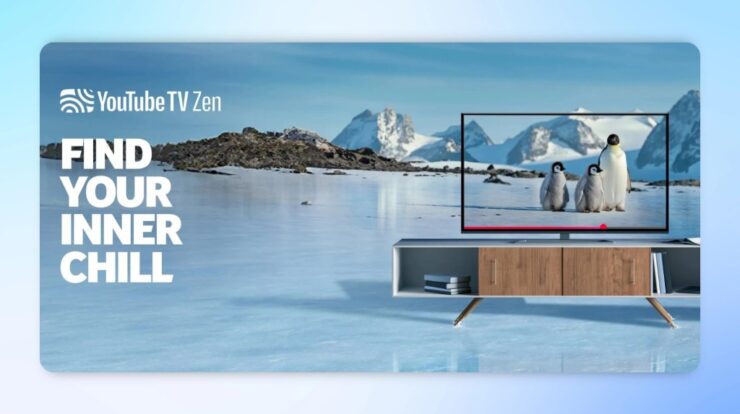
Within merely eight years, operating in an environment marked by declining cable subscriptions and industry downturns, YouTube TV has emerged as one of the biggest pay-TV services in the United States.
In rapidly scaling to
over 8 million U.S. homes
Since its launch in 2017, it has challenged the traditional living-room viewing setup. Viewers have taken to its modern interface, replacing manual channel surfing with curated content and algorithm-driven suggestions, along with features such as Multi-view and unrestricted DVR capabilities. This places it just behind major players like Comcast, Charter, and DirecTV.
A particular advertisement-related issue has received mixed reactions within certain sectors of the industry. While television advertisers and providers convene in New York next week for their high-profile yearly event featuring upfront pitches running from Monday to Wednesday, discussions often bypass the topic of distributor involvement. However, dissatisfaction with YouTube TV’s strategy has escalated to an extent where it resembles “ground loop hum” emanating from speakers—a term used by audio technicians. According to interviews conducted recently by Dailyexe with roughly a dozen individuals involved in various aspects of the television package ecosystem—including content creators, suppliers, and marketing professionals—the predominant sentiment toward YouTube TV centers around accusations of insufficient cooperation and profligate use of commercial slots.
The general complaint: YouTube isn’t like the cable guys, stringing wires from telephone poles or sending trucks into residential neighborhoods. It is a data-hungry tech giant that doesn’t run its pay-TV business for profit but rather for longer-term strategic leverage. Therefore, the usual give and take between programmers and distributors does not apply. In practical terms, that means that any unsold inventory is not made available to programmers for resale or for promotional purposes, as has historically been the case in agreements negotiated throughout the pay-TV era. While programmers and distributors often clash (usually over carriage fees), they do share the objective of selling as much ad time as possible.
In a landscape where numerous channels broadcast around the clock, having leftover inventory is inevitable for every pay-TV provider. Clearly, not everything available is top-tier content like prime-time sports.
Yellowstone
Traditional cable and satellite providers often turn to interstitial cards or self-promotional advertisements when facing unfilled advertising slots. However, from inception, YouTube TV aimed for different objectives. At a 2017 launch event, late former YouTube CEO Susan Wojcicki characterized it as “a move towards evolving television.” Rather than inundating viewers with aggressive commercials like those promoting Bob’s Chevy dealership, YouTube TV opts instead for serene visuals such as tranquil snow-covered mountainsides or woodland creatures nibbling acorns amidst foggy groves accompanied by soothing background tunes reminiscent of a spa experience. The screen prompts, “Savor this moment,” which can last anywhere between several seconds to over two minutes before announcing, “Back soon.”
The technology firms struggle with selling all their ad slots and lack an understanding of filling broadcast hours through direct purchases as we do in conventional television,” explained Chris Pizzurro, co-founder and head of Leap Media, during a Dailyexean interview. “YouTube TV doesn’t feature infomercials or Ginsu Knives.
According to a leading executive, as a competitor to cable and satellite services, YouTube TV is “capitalizing on the widespread discontent with the traditional multichannel video programming distributor model” and intentionally disrupting conventional practices within the sector.
When reached out by Dailyexe, YouTube chose not to provide comments for the article. Due to the sensitivity surrounding discussions about an ongoing partnership with a key ally, media executives consented to talk but requested confidentiality.
“You know how they operate,” one high-level sales exec from a major media company said. “They’re very machine-like in trying to disadvantage you. Whenever you see that zen thing, it’s a commercial opportunity that’s not being monetized.”
As they observed their daytime content being streamed live on YouTube TV, executives at NBCUniversal opted to implement preemptive adjustments. Despite having fewer total viewers compared to some competitors, CNBC attracts an audience notable for both wealth and clout. Understanding this dynamic, the channel began collecting potential “calming” segments which were then utilized to promote different aspects of the company vertically—this included everything from Bravo programs all the way through NBC’s range of sporting events, journalistic pieces, and entertainment options.
As meditation apps and ASMR YouTubbers gain unprecedented popularity, “enjoy the zen” has become a catchphrase among audiences. Recently, YouTube TV introduced a dedicated channel featuring continuous natural scenery segments.
“We heard you loud and clear,” YouTube TV stated in a social media update. “The new Zen channel allows you to experience Zen anytime!”
The demographic makeup of YouTube TV subscribers plays a significant role in shaping this approach. Although younger audiences tend to be more open to advertisements across various digital platforms like social media, they aren’t seeking out an experience akin to what their parents had with traditional television—where over twenty-five percent of viewing time can be taken up by commercial interruptions. As cable started declining during the 2010s, Viacom found itself in a challenging position.
accused of “ad stuffing.”
Between that extreme behavior and the neglect of customer service just as Netflix was beginning to take off, the traditional linear industry almost seemed to be intentionally driving viewers away.
In March 2024, Nielsen measured viewership in homes with wired cable and homes with YouTube TV. It found that among 25-to-34-year-olds, cable represented 4%, while YouTube TV was 13%. The disparity was even greater, 11% to 22%, among 35-to-49s, From there up the age demo ladder, the pendulum swung the other way, with cable leading, 28% to 26%, among 50-to-64-year-olds and 49% to 22% with those 65 and older.
Bruce Leichtman, a longtime media researcher who tracks pay-TV providers, says much of YouTube’s recent growth is starting to flatten, so however it approaches advertising won’t necessarily define the entire sector. Other internet-delivered operators like Hulu + Live TV, Fubo and Sling TV have been flat or shedding subscribers in recent quarters.
“The pace at which they are growing has slowed to about half of what it was a few years back,” Leichtman stated regarding YouTube, pointing out a “premature surge” in 2023 due to their commencement of streaming services.
NFL’s Sunday Ticket package
The firm has additionally
raised prices
To nearly $83 per month, an increase of about 20% within just over a year, which might hinder progress. “Initially, part of their expansion plan involved providing the market with strength via reduced prices, however, this approach isn’t feasible long-term,” according to Leichtman.
The discussion surrounding YouTube TV’s approach to advertisements is even more intriguing considering that its parent company, Google, had actions or announcements just last month regarding this issue.
convicted by a federal judge
Regarding antitrust violations in its advertising technology division.
Google generally prefers not to share signals, making it extremely challenging for their partners to profit from digital marketplaces,” explained a top media executive to Dailyexe. “However, gradually, we might witness a more accommodating stance towards traditional pay-TV systems.
Evan Shapiro, a previous television network executive turned consultant and “media cartographer,” believes YouTube’s primary competitor is actually itself. While YouTube offers an expansive platform defined by creators, this ecosystem isn’t available through YouTube TV due to contractual agreements with various networks that prevent them from diverting audiences from subscription-based models. By 2024, YouTube had amassed approximately $56 billion in advertising revenue, significantly outpacing conventional media competitors.
“The problem isn’t that YouTube is ‘foregoing revenue’ – something YouTube would never do,” Shapiro told Dailyexe. “It’s that they are better at generating it and proving value in return than traditional TV is.”
More from Dailyexe
- AMC Networks Loses Ground In Q1: Advertising, Streaming Levels Slip As Results Miss Wall Street Forecasts
- Meta Unveils Thread Video Ads, Popular Position for Reels, and Additional Choices for Advertisers






